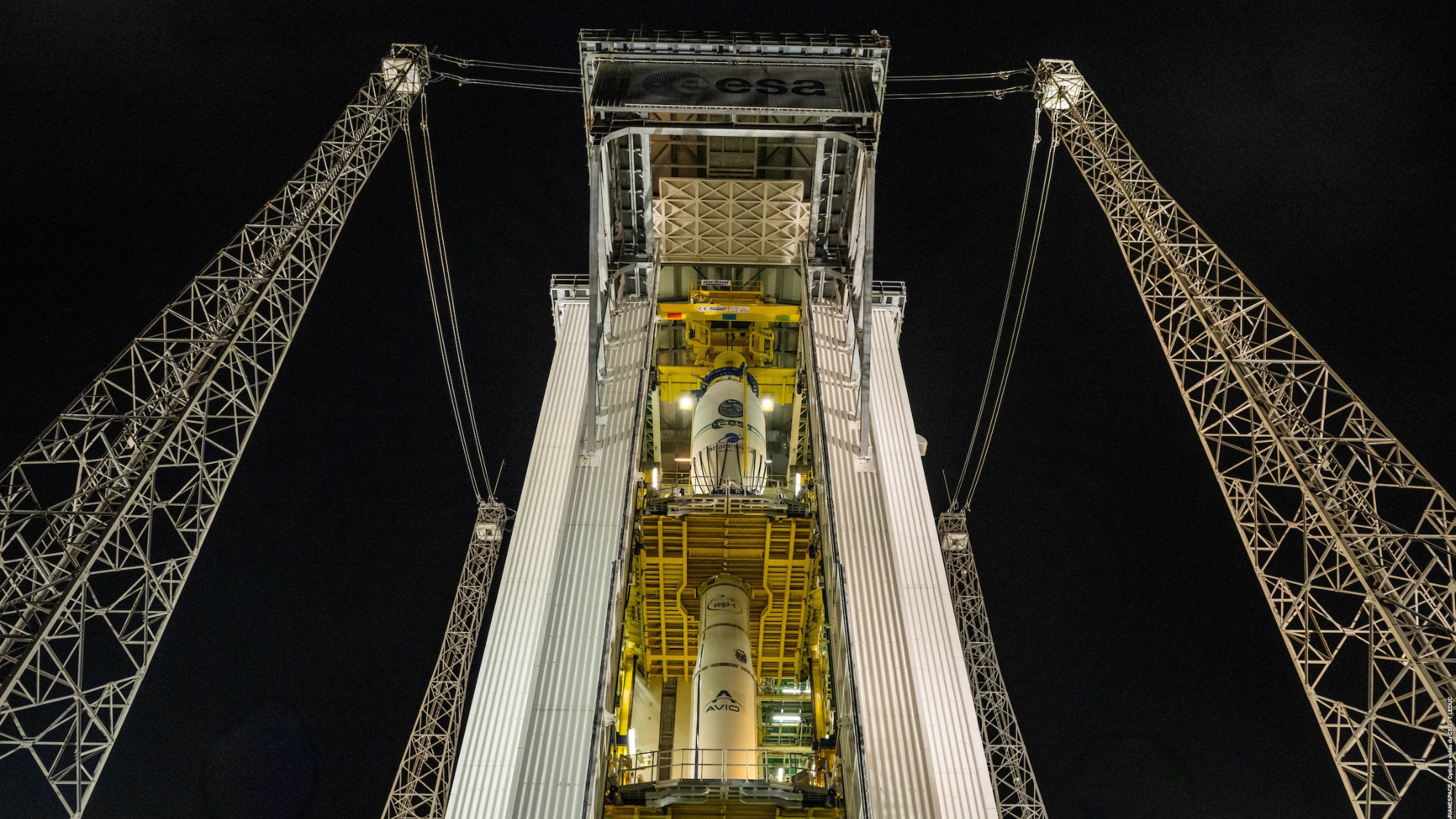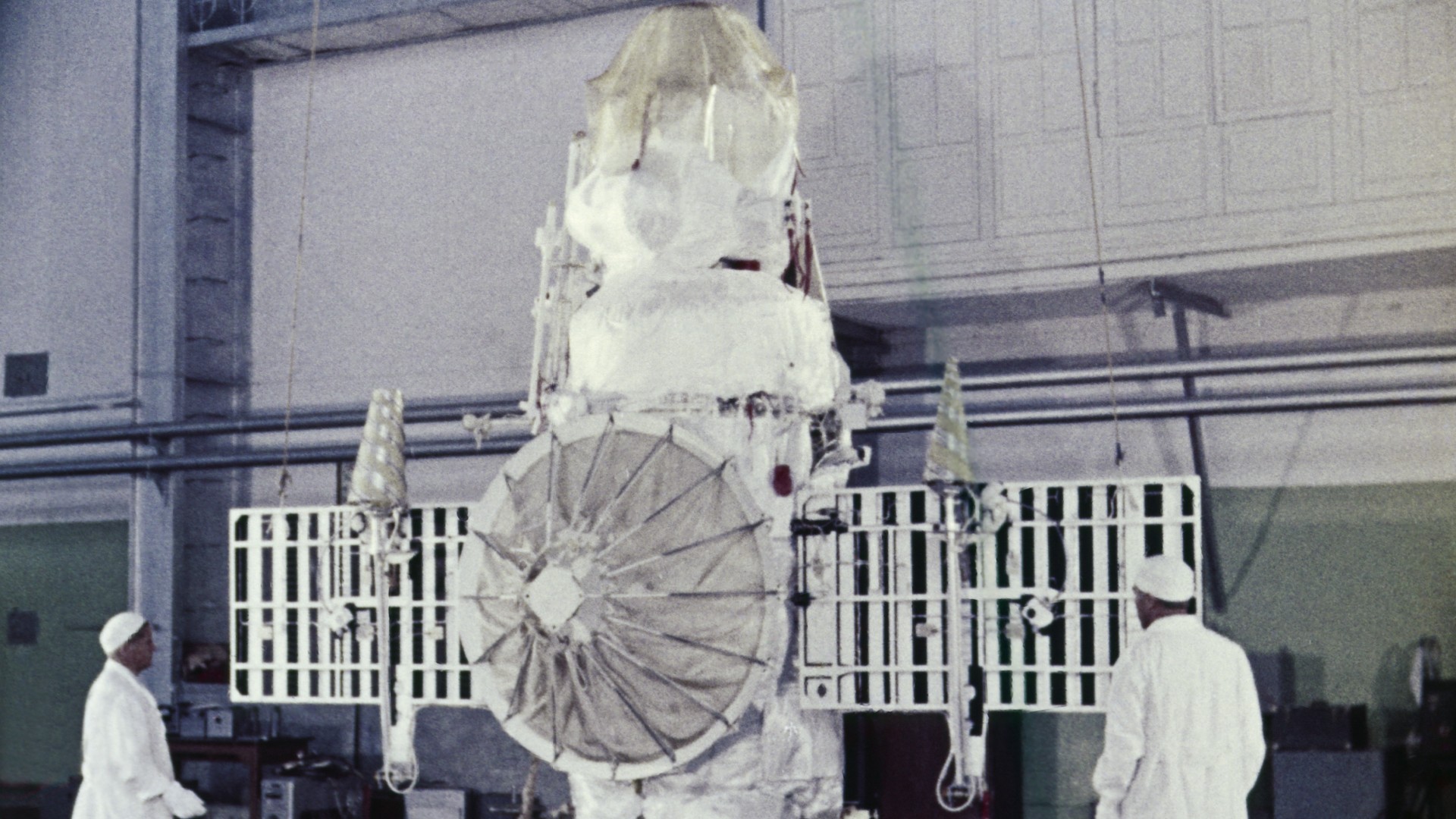Sun Unleashes Monster Solar Flare, Biggest of 2014
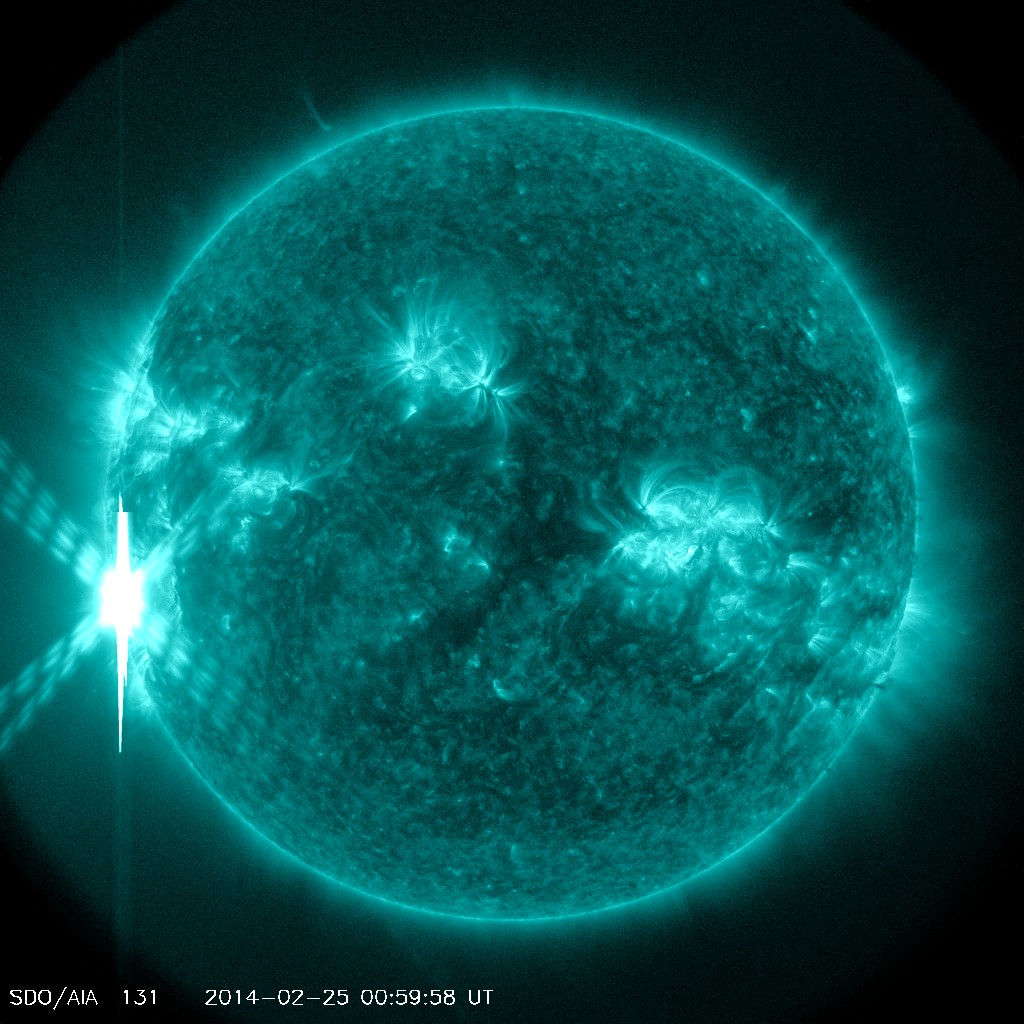
The sun fired off a major solar flare late Monday (Feb. 24), making it the most powerful sun eruption of the year so far and one of the strongest in recent years.
The massive X4.9-class solar flare erupted from an active sunspot, called AR1990, at 7:49 p.m. EST (0049 Feb. 25 GMT). NASA's Solar Dynamics Observatory captured high-definition video of the monster solar flare. The spaceecraft recording amazing views the solar flare erupting with a giant burst of plasma, called a coronal mass ejection, or CME.
Earth isn't in danger from the latest eruption of space weather activity, according to officials with Spaceweather.com, which tracks space weather and stargazing events. Sunspot AR1990 (previously named AR1967) is located on the southeastern limb of the sun, pointed away from Earth. This is the third time this sunspot has rotated onto the Earth-facing side of the sun. [Photos: The Biggest Solar Flares of 2014]
"Long-lived sunspot AR1967 returned to the Earthside of the sun on Feb. 25th and promptly erupted, producing an X4.9-class solar flare," astronomer Tony Phillips wrote in a Spaceweather.com alert. "This is the strongest flare of the year so far and one of the strongest of the current solar cycle."
Earth isn't totally out of the woods yet, however. This region of the sun is set to rotate more fully into view of Earth over the next week, according to officials with the NOAA-led Space Weather Prediction Center.
X-class solar flares are the most powerful kinds of solar storms. If directed at Earth, last night's solar flare could have caused a serious geomagnetic storm, created when charged particles slam into the planet's magnetic field. When aimed at Earth, strong solar flares can harm satellites and astronauts in orbit around Earth. A powerful solar flare delayed the launch of a private cargo ship to the International Space Station in January.
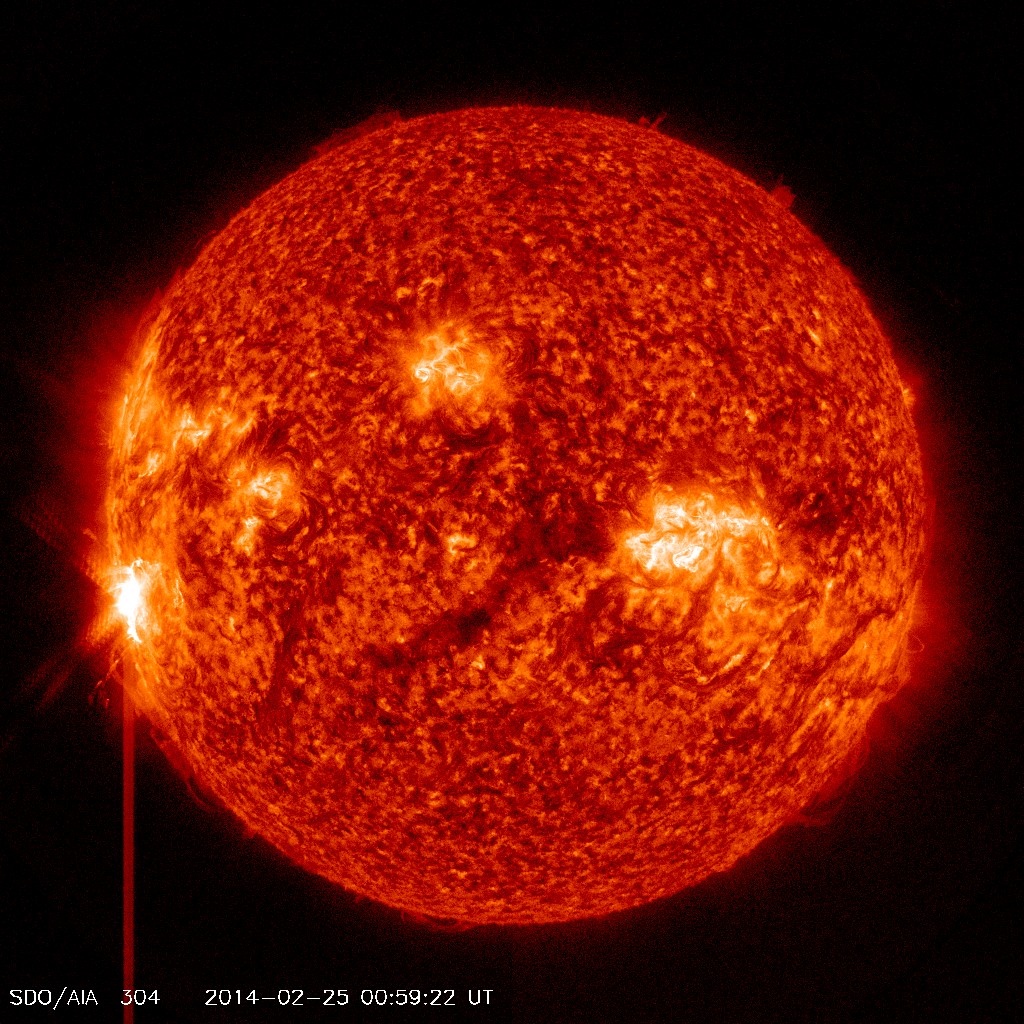
"Radio emissions from shock waves at the leading edge of the CME suggest an expansion velocity near 2,000 km/s or 4.4 million mph," Phillips wrote. "If such a fast-moving cloud did strike Earth, the resulting geomagnetic storms could be severe."
Get the Space.com Newsletter
Breaking space news, the latest updates on rocket launches, skywatching events and more!
The sun is currently in the active phase of its 11-year solar cycle, called Solar Cycle 24. While X-class storms are the most powerful, mid-level flares are named M-class events, which can supercharge Earth's northern lights. Weaker C-class events round out the top three most powerful types of solar storms.
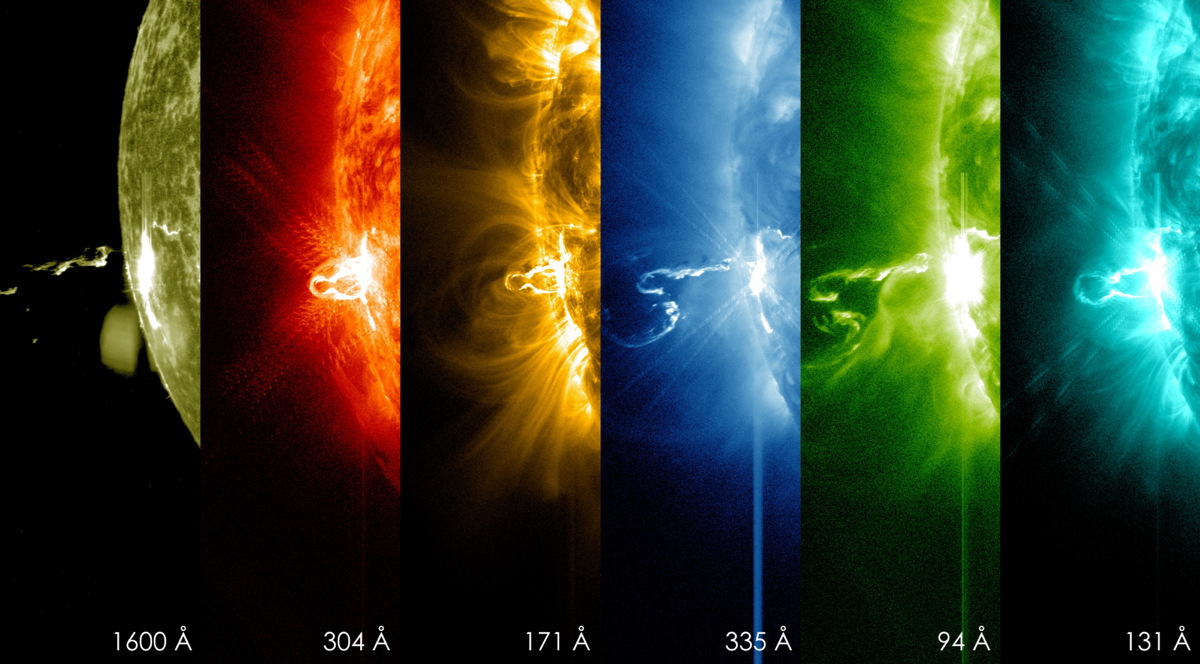
Editor's note: This story was updated to reflect a correction at 10:12 a.m. EST. The flare occurred on Monday, not Tuesday, as previously stated.
Follow Miriam Kramer @mirikramer and Google+. Follow us @Spacedotcom, Facebook and Google+. Original article on Space.com.
Join our Space Forums to keep talking space on the latest missions, night sky and more! And if you have a news tip, correction or comment, let us know at: community@space.com.

Miriam Kramer joined Space.com as a Staff Writer in December 2012. Since then, she has floated in weightlessness on a zero-gravity flight, felt the pull of 4-Gs in a trainer aircraft and watched rockets soar into space from Florida and Virginia. She also served as Space.com's lead space entertainment reporter, and enjoys all aspects of space news, astronomy and commercial spaceflight. Miriam has also presented space stories during live interviews with Fox News and other TV and radio outlets. She originally hails from Knoxville, Tennessee where she and her family would take trips to dark spots on the outskirts of town to watch meteor showers every year. She loves to travel and one day hopes to see the northern lights in person. Miriam is currently a space reporter with Axios, writing the Axios Space newsletter. You can follow Miriam on Twitter.

